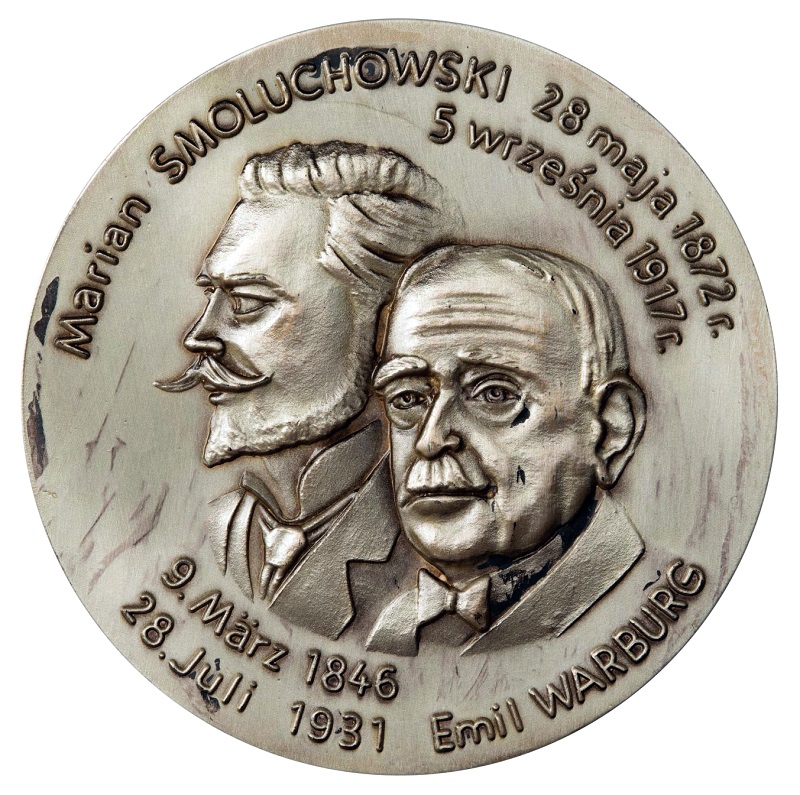Marian Smoluchowski - Emil Warburg Award

The prize is awarded every two years for outstanding achievements in the field of physics or its applications. Its winner may be a scientist whose work is related to a research center in Poland or Germany. The symbol of the award is a medal made of silver, and the accompanying cash bonus was funded by the Meyer-Viol Foundation.
Marian Smoluchowski (1872-1917) was a classic in statistical physics. He conducted research into the explanation of Brownian motion. Albert Einstein used his results to formulate a theory explaining the chaotic motions of particles. One of the equations of the diffusion theory is known as the Smoluchowski equation. On July 15, 1917, he was elected rector of the Jagiellonian University. The Institute of Physics of the Jagiellonian University is named after him. By the decision of the International Astronomical Union in 1970, one of the craters on the moon was named Smoluchowski.
Emil Warburg (1846-1931) he conducted research in the field of the kinetic theory of gases, electrical conductivity, discharges in gases, helium radiation, ferromagnetism and photochemistry. He discovered the magnetocaloric effect in iron in 1881. Among his students were James Franck (Nobel Prize in Physics 1925) and Hans Karl August Simon von Euler-Chelpin (Nobel Prize in Chemistry 1929). In the years 1899-1905 he was president of the DPG (German Physical Society)
Regulations of the Marian Smoluchowski - Emil Warburg Award
